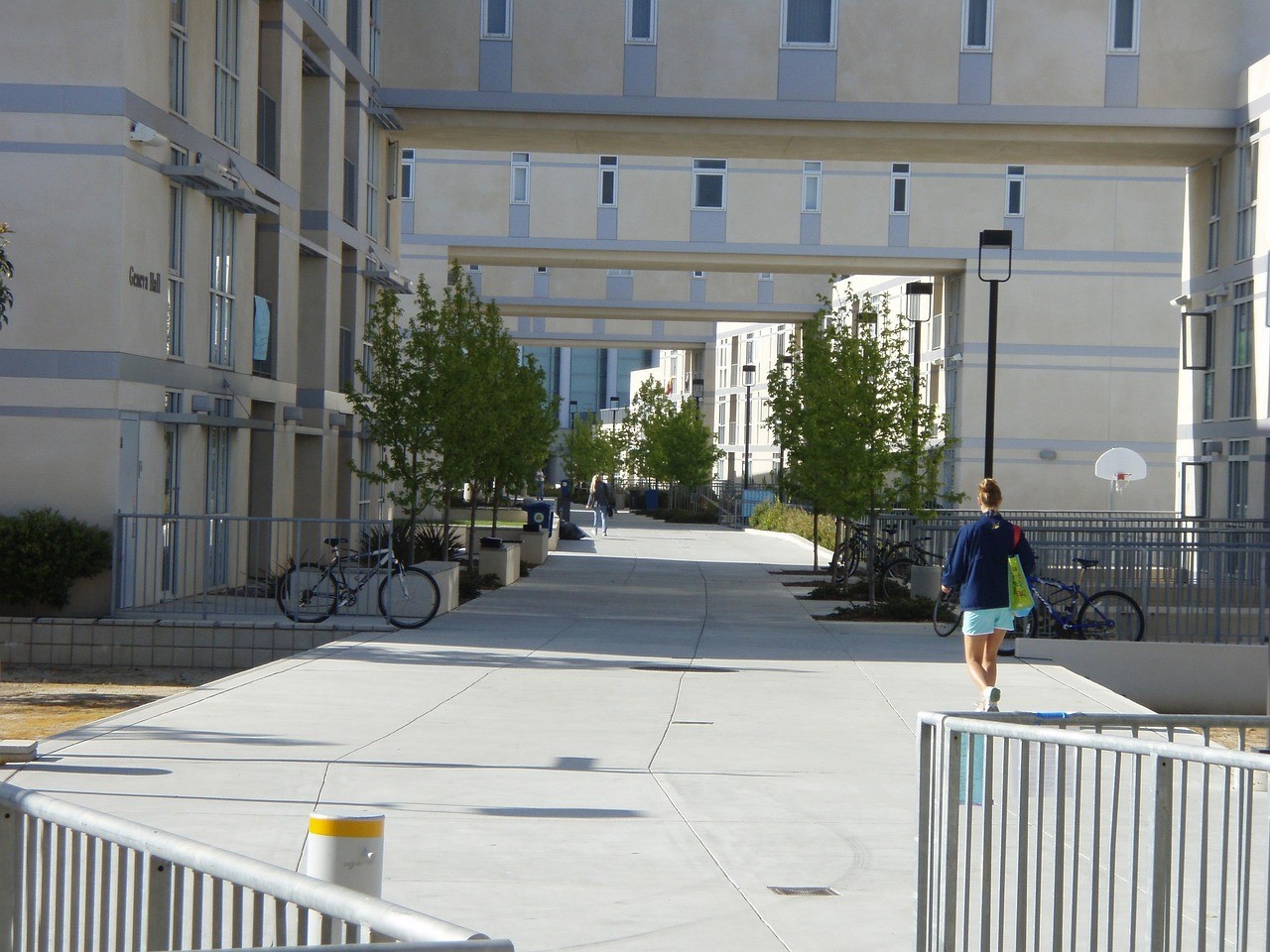What is rolling admission? Rolling admission is a method of college application review in which applications are assessed, and decisions are made continuously instead of waiting for a set deadline. This indicates that applicants have the flexibility to submit their applications and receive a decision whenever they choose. Rolling admissions offers several advantages due to its flexibility, like application timing, increased opportunities, mid-year enrollment and much more. The blog will help you learn about rolling admission definition, rolling admission meaning, rolling admission school options and so on.
What is Rolling Admission
Every college desires a stronger academic background for their incoming freshmen class. By utilizing a rolling admission, it suggests that the acceptance rate of the school is greater than its yield. This indicates that more candidates are accepted compared to those who enroll, typically exceeding 20% or higher. The waitlist percentage for a competitive university is generally 1-2% of a class, with no certainty of opening spots. In contrast to “rolling admission,” the focus is on presenting the opportunity to the applicant as quickly as possible.
Even with a rolling admissions policy, it doesn’t mean that there isn’t a communications plan in place. Decisions are made more often, but colleges with rolling admissions still set the schedule for when they are released. The frequency could range from monthly to daily based on the proximity to the decision day on May 1st in the U.S.. Numerous students have submitted applications after the deadline due to losing in the 5% lottery and overestimating scholarship offers that did not come to fruition. While patience is essential, it is generally recommended to submit your application before the end of April in the enrollment year and every two weeks until the decision period is over.

Define Rolling Admission
What does the rolling admission definition exactly mean? Rolling admissions is a distinctive application process that some colleges have. Colleges that have a rolling admissions policy evaluate applications as soon as they are received rather than waiting until a specific deadline to review all applications. Usually, colleges with rolling admissions will continue to evaluate applications until they’ve filled all the slots for their incoming class. Crucially, the school rolling admission process isn’t binding, allowing you to choose your ideal school until the college’s deadline.
For example, for the customary beginning of the academic year (autumn), it’s usually December or January in advance. The admissions staff will not begin informing applicants of their acceptance or rejection status until a few weeks after the deadline. Nevertheless, universities with rolling admissions function in a slightly distinct manner. They consistently receive applications and make decisions promptly upon completing the review of your application.
Rolling admissions implies that there is no specific deadline for submitting applications. However, students should avoid assuming they have ample time to submit applications or that it’s simpler to be accepted into a school with rolling admissions.

Advantages of Rolling Admission
Students can focus on their application and other requirements without worrying about a deadline, particularly beneficial for high school students during their senior year.
Students can take their time to apply, giving them more time to improve their grades or take on extracurriculars.
Disadvantages of Rolling Admission
Spots may fill up quickly
Someone applying for rolling admission later may miss out on the desired college due to limited availability.
Priority Deadlines
Some institutions may have priority deadlines despite rolling admissions
Financial Considerations
Rising tuition costs necessitate maximizing financial aid, applying early can maximize admission chances and access to scholarships and financial aid
Colleges with Rolling Admissions
Some prestigious institutions, such as New York University, Pennsylvania State University, and Loyola University Chicago, have rolling admissions, and we have listed some other colleges with flexible rolling admissions.
| Schools with Rolling Admissions | Location | |
|---|---|---|
| 1 | New York University | New York City, New York |
| 2 | Rutgers University | New Brunswick, New Jersey |
| 3 | Washington State University | Pullman, Washington |
| 4 | Pennsylvania State University | University Park, Pennsylvania |
| 5 | Indiana University | Bloomington, Indiana |
| 6 | Rochester Institute of Technology | Rochester, New York |
| 7 | Iowa State University of Science and Technology | Ames, Iowa |
| 8 | Loyola University Chicago | Chicago, Illinois |
| 9 | Michigan State University | East Lansing, Michigan |
| 10 | University of Alabama | Tuscaloosa, Alabama |
| 11 | University of Cincinnati | Cincinnati, Ohio. |
| 12 | University of Pittsburgh | Pittsburgh, Pennsylvania |
| 13 | University of Maryland | College Park, Maryland |
| 14 | Kansas State University | Manhattan, Kansas |
| 15 | St. John’s University | New York City, New York |
| 16 | University of Maine | Orono, Maine |
| 17 | University of Mississippi | Oxford, Mississippi |
| 18 | University of New Haven | West Haven, Connecticut |
| 19 | Creighton University | Omaha, Nebraska |
| 20 | Arizona State University | Phoenix, Arizona |
How Does Rolling Admission Work

Educational institutions employing a rolling admissions system continuously accept and assess applications. They begin receiving applications at the beginning of the admissions process and keep going until they reach their desired number of students or a set deadline. Admissions officers evaluate applications in the order they are submitted. This frequently leads to a quicker response for candidates, with decisions being made shortly after the application process is finished. Certain applicants could get notified of decisions shortly after submitting their application.
Applicants for rolling admissions should anticipate having to fulfill the same admissions requirements as they would for early and regular admissions. Candidates are assessed on their academic accomplishments, test results (if relevant), recommendations, extracurricular activities, and personal statements. Usually, rolling admissions are not binding. Students who are admitted are not required to register right away, giving them the freedom to explore other opportunities.
How to Prepare for Rolling Admission
- Commence Early: In order to guarantee that you have enough time to acquire all the required documentation, start the application procedure at least six months in advance of the day you wish to enroll.
- Attention Timelines: Priority deadlines are used by some universities that provide rolling admissions, increasing the chances of acceptance for applicants.
- Be Cautious Before Applying: Apply the same diligence to your rolling decision applications as you would to your regular decision applications.
- Write Compelling Essay: One of the best methods to impress the admissions team is your personal statement, show that you’re interested and qualified to apply.
- Pay Attention to Financial Assistance: After October 1, we advise completing the Free Application for Federal Student Aid (FAFSA) as soon as possible. If you’re applying to college later in the rolling admission window, you run the chance that school assistance funding and scholarships will have been distributed to those students who were accepted before you.
If you apply later, you might still be accepted, but there will be fewer opportunities for those exclusive offers since rolling admissions are usually given out on a first-come, first-served basis. In simpler terms, you might be approved, but there are no available on-campus accommodations, or scholarships and financial assistance have already been distributed to different individuals.
Is Rolling Admission Binding
Rolling admissions is generally non-binding, allowing admitted students to take their time in deciding whether to enroll. The benefit to the college is that if they are not super competitive or in great demand (lower yield and mostly T100-T500 schools do this), they can fill up seats and improve their yield statistics with very little upfront cost. They can employ a skeleton crew to process rolling applications and have a steady stream of matriculants.
The benefit to applicants is that they know they will have somewhere to go if they get admitted on a rolling basis. This takes the stress and edge off for those HS students who are anxious about the process and would feel better if they had a place to land.
If you apply to a rolling decision school, you can still apply to other RD/EA schools. Remember, rolling admission just means that the college has a first-come, first-serve policy to their Regular Decisions, which are not binding.
When do Rolling Admission Decisions Come Out
These schools usually release rolling admission outcomes in 4-6 weeks. Schools with rolling admissions generally accept applications in early September and continue to do so until the spring term. This indicates that you are still eligible to submit applications to colleges commencing soon. Submitting your application early at a university with rolling admissions is important. Because:
- Applications are evaluated and considered upon submission, so there could be limited competition initially.
- Discover your application outcome earlier—if declined, you may still be able to apply elsewhere; if accepted, you can relax and take a break!
- As applications are processed on a first-come, first-served basis, open positions may be taken up rapidly.
Early Action vs Rolling Admission
1. Deadlines: Rolling Admission is first-come, first-served and does not have set deadlines; Early Action often has early deadlines (generally in November or December).
2. Decision Release: Following Early Action, a decision is made on a predetermined date, typically in December or January. Depending on when you submitted your application, judgments about rolling admissions will be sent at that time.
3. Acceptance Chances: Early Action can result in a somewhat higher acceptance rate, although Rolling admittance often has a higher admittance rate because more spaces are available early in the process.
Remember that regardless of the admission plan you select, the most crucial element affecting your chances of admission is the overall quality of your application.
Regular Decision vs Rolling Admission
Regular decision: All applications for admission must be received by a certain date, and no decisions on admission are made until after that date.
Rolling admission: Admission may be offered right away if an applicant meets the college’s or university’s criteria; however, the longer an applicant waits to submit his or her application, the less chance there will be places left for new students in the next academic year.
Rolling admissions and regular decisions differ primarily in their evaluation timeline and decision-making approach.In rolling admissions, colleges review applications as they come in, potentially providing faster decisions and less competition early in the process. Regular decision applications are reviewed after a specific deadline, resulting in a later notification timeframe.
Rolling admissions decisions are not binding, giving students until the school’s deadline to make their final decision, even if the deadline comes after the regular decision deadlines of other institutions.
Final Thoughts of Rolling Admission
Rolling admission is a good way to secure college admission sooner. This could be a good choice if you feel anxious about getting accepted. You might also enhance your likelihood of receiving scholarships, and financial assistance and choosing student housing. uhomes.com is a rental website that provides luxury to affordable student housing that suits your preferences. Due to this, rolling admission is ideal for individuals concerned about college costs or graduating with excessive debt. Plan to apply towards the end of the rolling window due to upcoming responsibilities, such as midterm papers. Rolling admissions will give you extra time to finish all your applications.
In conclusion, a rolling admission policy benefits students who follow a non-traditional college route. Rolling admission benefits individuals who want to apply to college earlier or later than the traditional deadlines. It is also suitable for students who opted for a gap year or entered the workforce instead of immediately attending college after high school.
Yes, you can apply to more than one school. One of the main advantages of rolling admissions is that it lets you apply to numerous schools at different times of the application season without committing to one until you receive an offer you choose to accept.
Accounting for time to gather recommendation letters and prepare essays and other materials, applicants should aim to apply in October or early November.
If you are ready to submit your application earlier than that, go for it. You may receive a decision sooner.
Apply late in the cycle only if waiting will help you significantly strengthen your candidacy. For example, some applicants plan to retake the SAT/ACT to aim for a better score.
Likewise, it is better to take the time to write your strongest possible essays, and to review your materials carefully, than to submit a rushed application with avoidable mistakes.
For students, rolling admissions has a few advantages. One is that since schools are more likely to accept a broader range of students throughout the year, it might make the admissions process less competitive. Furthermore, rolling admissions can allow students who might not have finished their applications by the customary deadline greater flexibility. Finally, because students won’t have to wait as long to hear whether they’ve been admitted, the procedure may be more laid back overall.
Regular decision means that all applications for admission must be received by a certain date, and that no decisions on admission are made until after that date. Rolling admission means that admission may be offered right away if an applicant meets the college’s or university’s criteria; however, the longer an applicant waits to submit his or her application, the less chance there will be that there are places left for new students in the next academic year. Additionally, early applications could boost your chances of getting into certain programs and receiving financial aid, scholarships, and student housing options.
If you’re thinking about studying in the US, it’s crucial to find the right student accommodation. That’s where uhomes.com comes in. It’s a reliable platform that helps students like you find the perfect place to live in New York, Boston, Los Angeles, Chicago, San Francisco and many other cities. So far, they’ve helped more than 55,000 students successfully find their dream homes.










